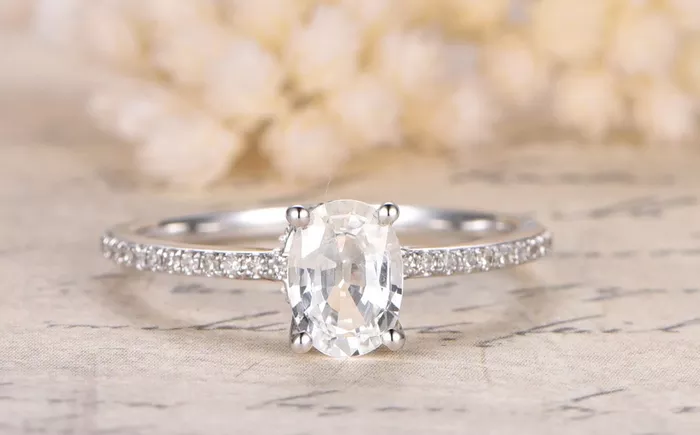In the world of jewelry, particularly in rings adorned with diamonds and other precious gemstones, the concept of carats holds significant importance. Carat weight serves as a crucial factor in determining the value, appearance, and desirability of a ring. This comprehensive guide explores what carats are, how they impact the pricing and quality of rings, factors to consider when evaluating carat weight, and practical advice for choosing the right carat weight for different preferences and occasions.
What Exactly Are Carats?
Carat is a unit of measurement used specifically for gemstones, including diamonds and colored gemstones. One carat is equivalent to 200 milligrams or 0.2 grams. The term “carat” originates from the carob seeds historically used as counterweights in balance scales due to their consistent weight.
Understanding Carat Weight in Rings
1. Impact of Carat Weight on Pricing
Carat weight is one of the primary factors influencing the price of a ring, particularly when it features diamonds. The general principle is straightforward: the higher the carat weight, the more valuable the diamond. However, it’s essential to recognize that pricing is not solely determined by carat weight; other factors such as cut, color, and clarity also significantly affect a diamond’s value.
Cut: Refers to how well the diamond’s facets interact with light. A well-cut diamond maximizes brilliance and sparkle, enhancing its overall appeal despite its carat weight.
Color: Diamonds are graded on a scale from D (colorless) to Z (light yellow or brown). The closer a diamond is to colorless, the more valuable it is, irrespective of carat weight.
Clarity: Describes the presence of internal and external flaws or inclusions within the diamond. Higher clarity grades indicate fewer imperfections, which can enhance a diamond’s brilliance and value.
Certification: Diamonds may be certified by independent gemological laboratories such as GIA (Gemological Institute of America) or AGS (American Gem Society). Certification provides an objective assessment of a diamond’s quality based on the 4Cs (cut, color, clarity, and carat weight).
2. Factors Influencing Diamond Value Besides Carat Weight
While carat weight is significant, it’s crucial to consider how other factors influence a diamond’s value:
Shape: Different diamond shapes (e.g., round, princess, oval, emerald) may appear larger or smaller for the same carat weight due to differences in how their weight is distributed.
Setting: The type of ring setting can affect how a diamond’s size and brilliance are perceived. For example, halo settings or side stones can enhance the appearance of a center stone.
Rarity and Demand: Market factors, including current trends and consumer demand for specific diamond characteristics, can impact pricing independently of carat weight.
See Also: How Can You Tell if a Ring Is Real?
Practical Considerations When Choosing Carat Weight
1. Personal Preferences
Selecting the right carat weight involves considering personal preferences and individual style:
Budget: Establishing a budget helps narrow down options and ensures realistic expectations regarding carat weight and overall ring quality.
Style: Different ring styles and designs can influence how carat weight is perceived. Classic solitaire settings may highlight a single, larger stone, while vintage or modern designs may incorporate multiple stones or intricate detailing.
Hand Size: Proportionality is key; larger carat weights may overwhelm smaller hands, while smaller carat weights may not make as much of a statement on larger hands.
2. Practicality and Lifestyle
Choosing an appropriate carat weight also involves practical considerations:
Everyday Wear: Rings intended for daily wear should be comfortable and durable. Larger stones may be more prone to snagging on clothing or catching on objects.
Occupation and Activities: Consider how lifestyle factors such as physical activities or professional requirements may influence the choice of carat weight. Active individuals may prefer lower-profile designs to minimize potential damage.
3. Consultation with Jewelry Experts
Engaging with knowledgeable professionals, such as certified gemologists or reputable jewelers, can provide valuable guidance:
Expert Advice: Gemologists can assess a diamond’s quality and provide insights into balancing the 4Cs with carat weight based on personal preferences and budget.
Customization Options: Some jewelers offer customization services, allowing for the creation of bespoke rings tailored to specific carat weight preferences and design aesthetics.
Conclusion
Carat weight serves as a fundamental metric in the evaluation and selection of rings adorned with diamonds and gemstones. Understanding what carats are involves grasping their measurement, impact on pricing, and relationship with other quality factors such as cut, color, and clarity. Whether choosing an engagement ring, anniversary gift, or personal indulgence, familiarity with carat weight empowers individuals to make informed decisions aligned with their preferences, budget, and lifestyle. By demystifying carats, this guide equips readers with the knowledge necessary to navigate the complexities of ring shopping with clarity and confidence, ensuring that each selection reflects both personal style and lasting value.

